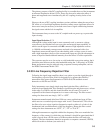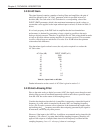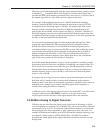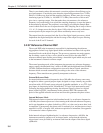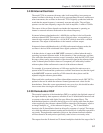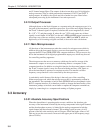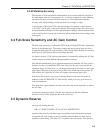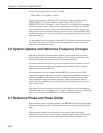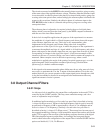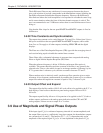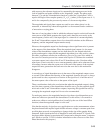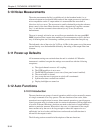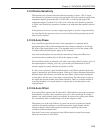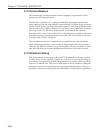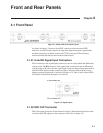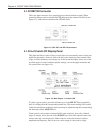
3-11
Chapter 3, TECHNICAL DESCRIPTION
The circuits connected to the REF IN socket actually detect a positive-going crossing
of the mean value of the applied reference voltage. Therefore when the reference input
is not sinusoidal, its effective phase is the phase of a sinusoid with positive-going zero
crossing at the same point in time, and accordingly the reference phase is defined with
respect to this waveform. Similarly, the effective phase of a reference input to the
TTL REF IN socket is that of a sinusoid with positive-going zero crossing at the
same point in time.
The reference phase is adjusted to its required value by the use of a digital phase
shifter, which is accessed from the front panel, by the REFP computer command or
with the use of the Auto-Phase function.
In basic lock-in amplifier applications the purpose of the experiment is to measure
the amplitude of a signal which is of fixed frequency and whose phase with respect
to the reference input does not vary. This is the scalar measurement, often
implemented with a chopped optical beam. Many other lock-in amplifier
applications are of the signed scalar type, in which the purpose of the experiment is
to measure the amplitude and sign of a signal which is of fixed frequency and whose
phase with respect to the reference input does not vary apart from reversals of phase
corresponding to changes in the sign of the signal. A well known example of this
situation is the case of a resistive bridge, one arm of which contains the sample to be
measured. Other examples occur in derivative spectroscopy, where a small
modulation is applied to the angle of the grating (in optical spectroscopy) or to the
applied magnetic field (in magnetic resonance spectroscopy). Double beam
spectroscopy is a further common example.
In this signed scalar measurement the phase shifter must be set, after removal of any
zero errors, to maximize the X or the Y output of the demodulator. This is the only
method that will give correct operation as the output signal passes through zero, and
is also the best method to be used in an unsigned scalar measurement where any
significant amount of noise is present.
3.8 Output Channel Filters
3.8.01 Slope
As with most lock-in amplifiers, the output filter configuration in the model 7220 is
controlled by the SLOPE variable. This may seem somewhat strange, and a few
words of explanation may be helpful.
In traditional audio terminology, a first-order low-pass filter is described as having
“a slope of 6 dB per octave” because in the high frequency limit its gain is inversely
proportional to frequency (6 dB is approximately a factor of 2 in amplitude and an
octave is a factor of 2 in frequency); similarly a second-order low-pass filter is
described as having “a slope of 12 dB per octave”. These terms have become part of
the accepted terminology relating to lock-in amplifier output filters and are used in the
model 7220 to apply to the envelope of the frequency response function of the digital
FIR (finite impulse response) output filters. Accordingly the front panel display
control which selects the configuration of the output filters is labelled SLOPE and the
options are labelled 6, 12, 18, 24 dB/octave.



